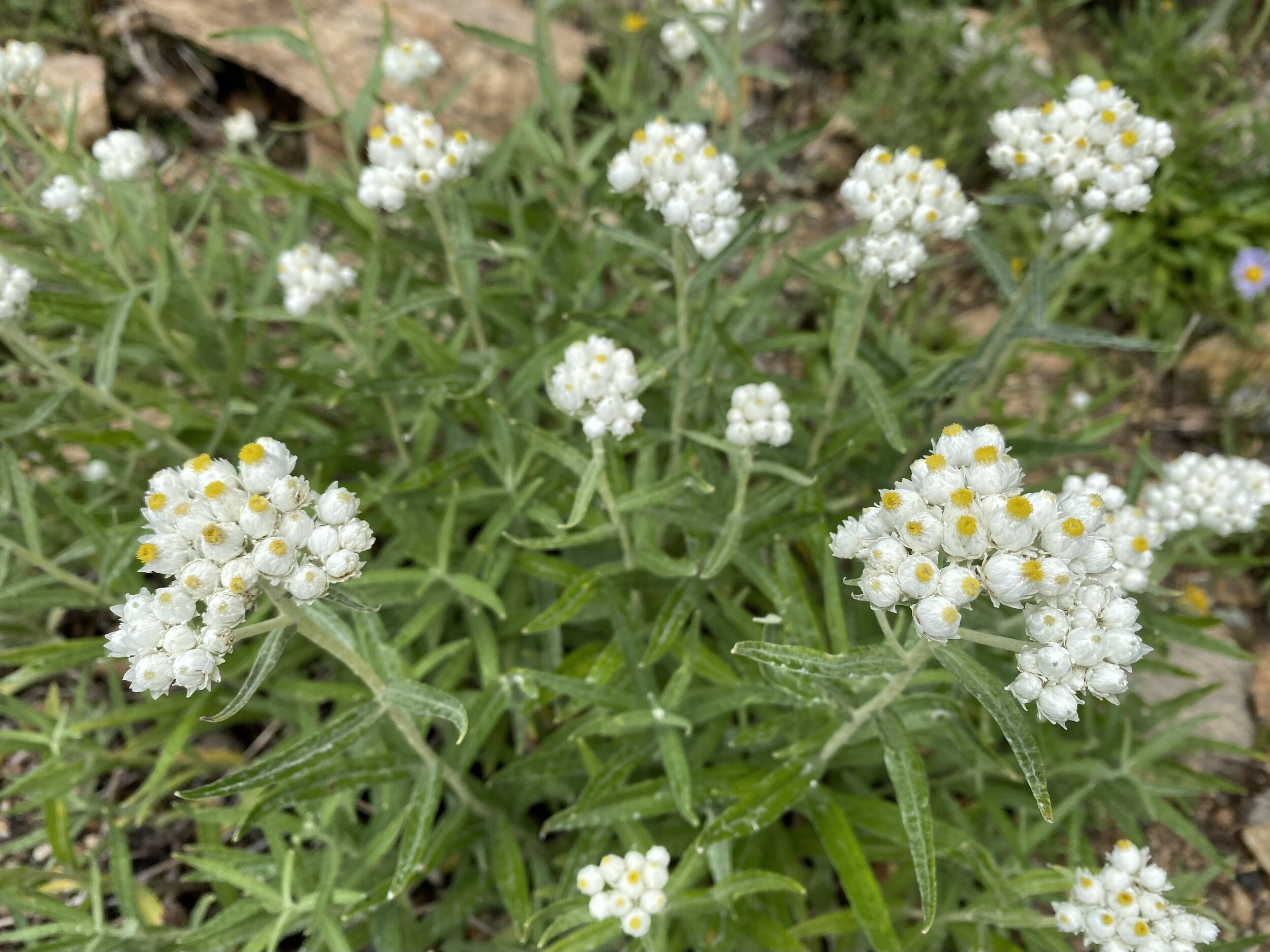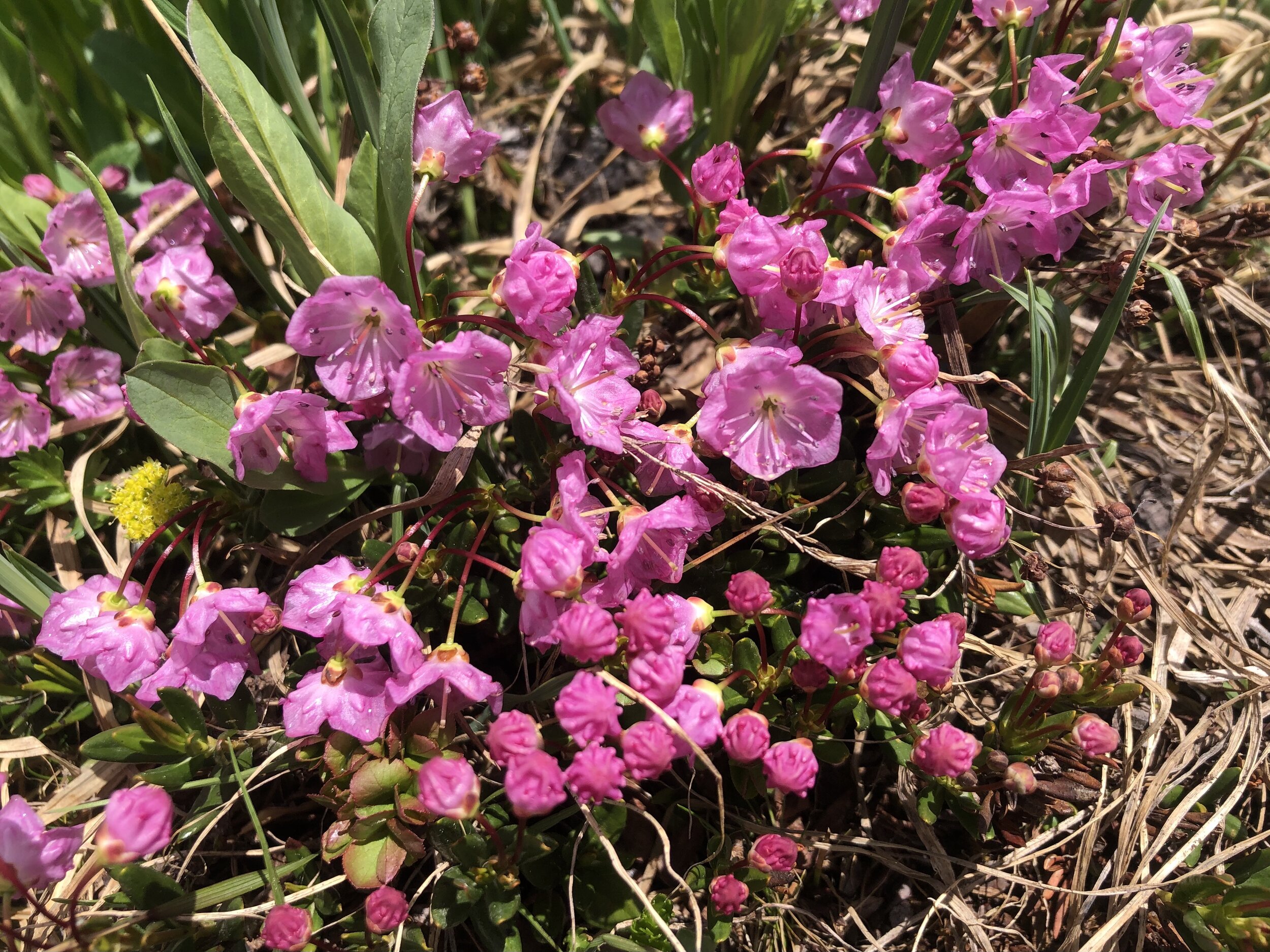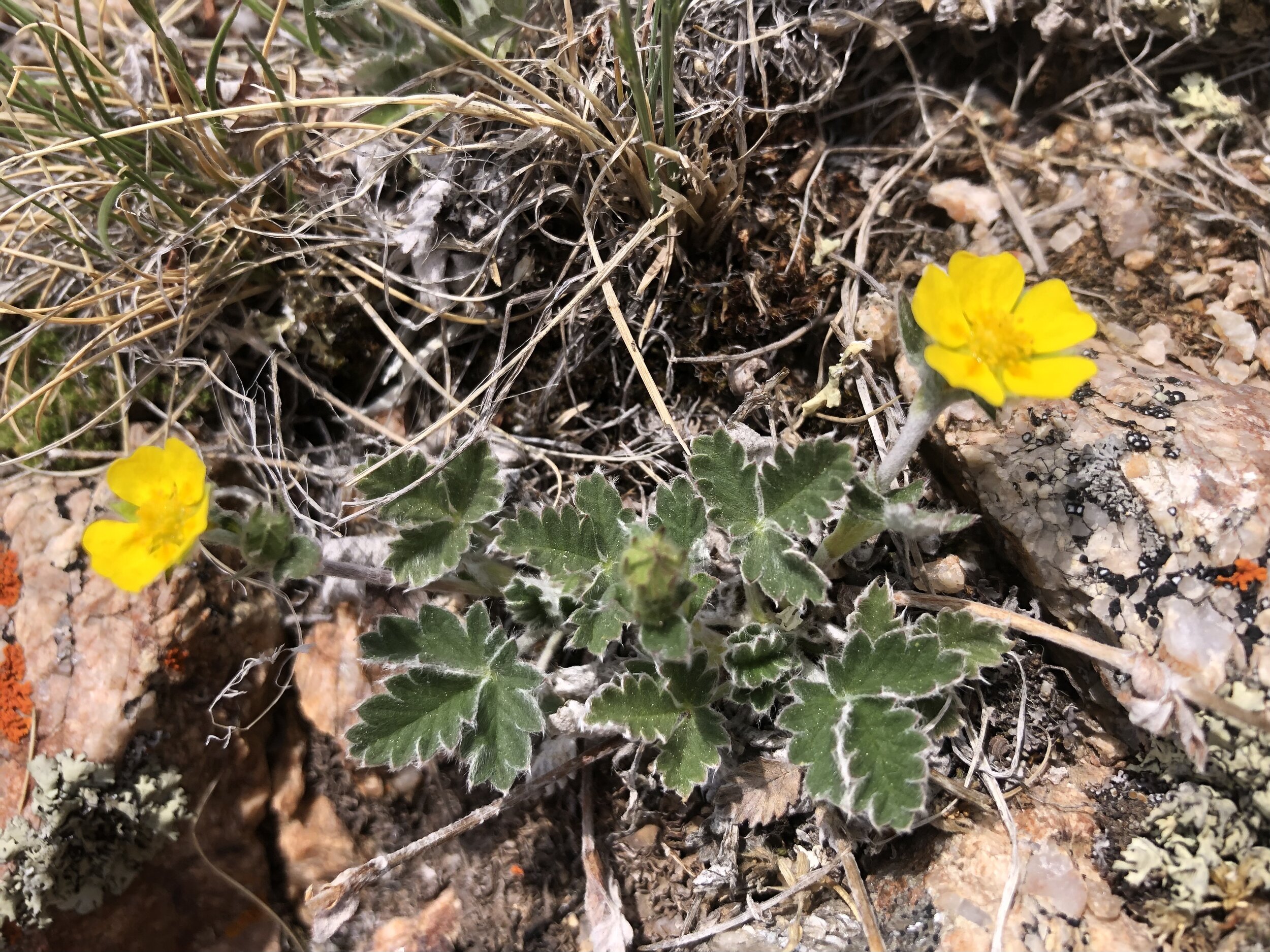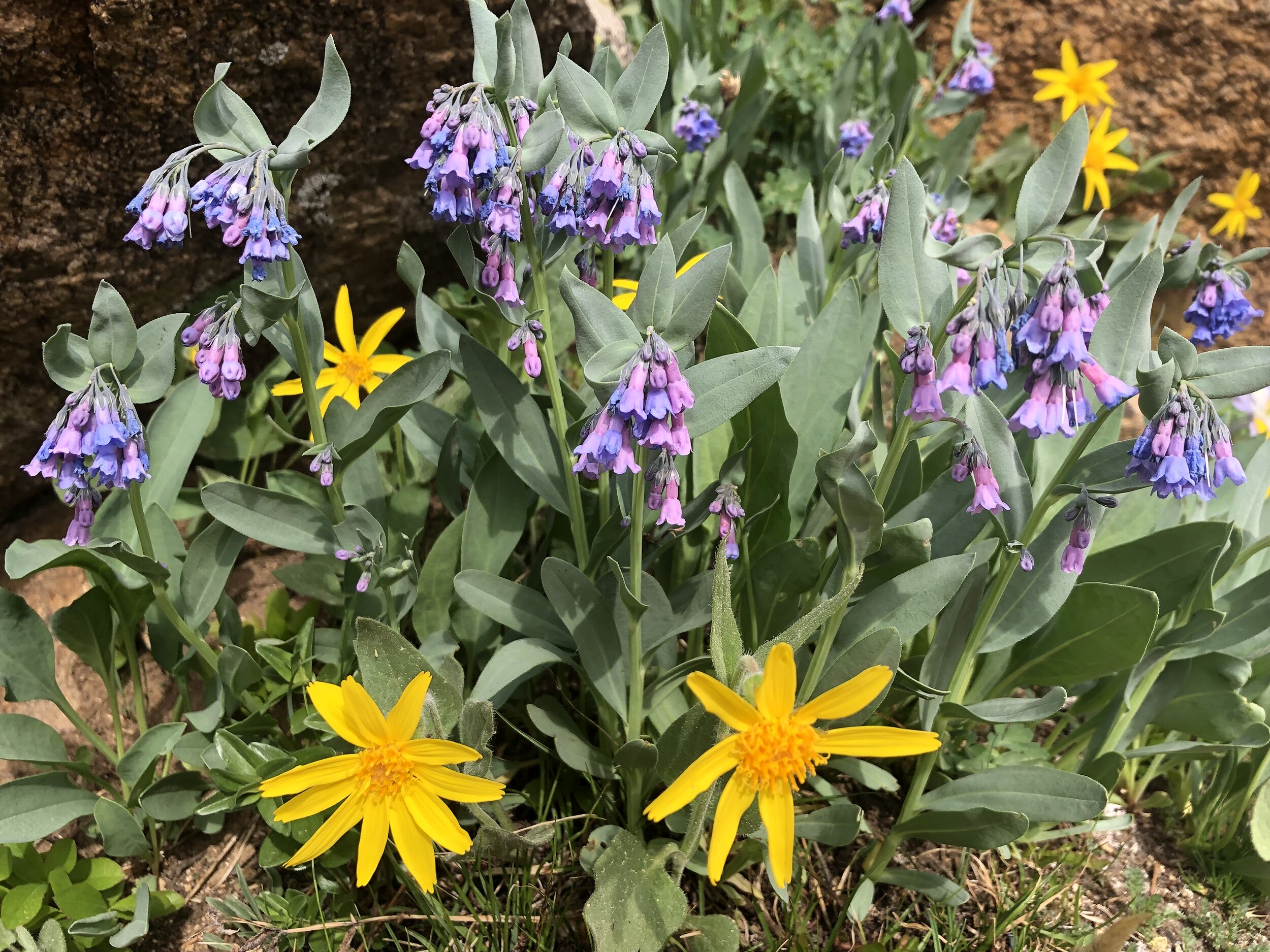Anaphalis margaritacea, June 17, 2021
Common & scientific name
Pearly everlasting, Anaphalis margaritacea
Family
Sunflower, Asteraceae
Location
Classy Cliffs, 8,300’
Fun, weird, helpful, or little known fact
Pearly everlasting, seen roadside and in meadows throughout our valley, grows in profusion via underground stems (“rhizomes”). It has no ray flowers, just small yellow disk flowers that early in bloom are completely enclosed within papery white bracts, making them appear pearl-like (as in this photo). And while Pearly everlasting looks like a Pussytoe (Antennaria sp.), it is taller and doesn’t have an extensive mat of small leaves at its base.
A. margaritacea, roadside, 10,000’, August 3, 2021








































